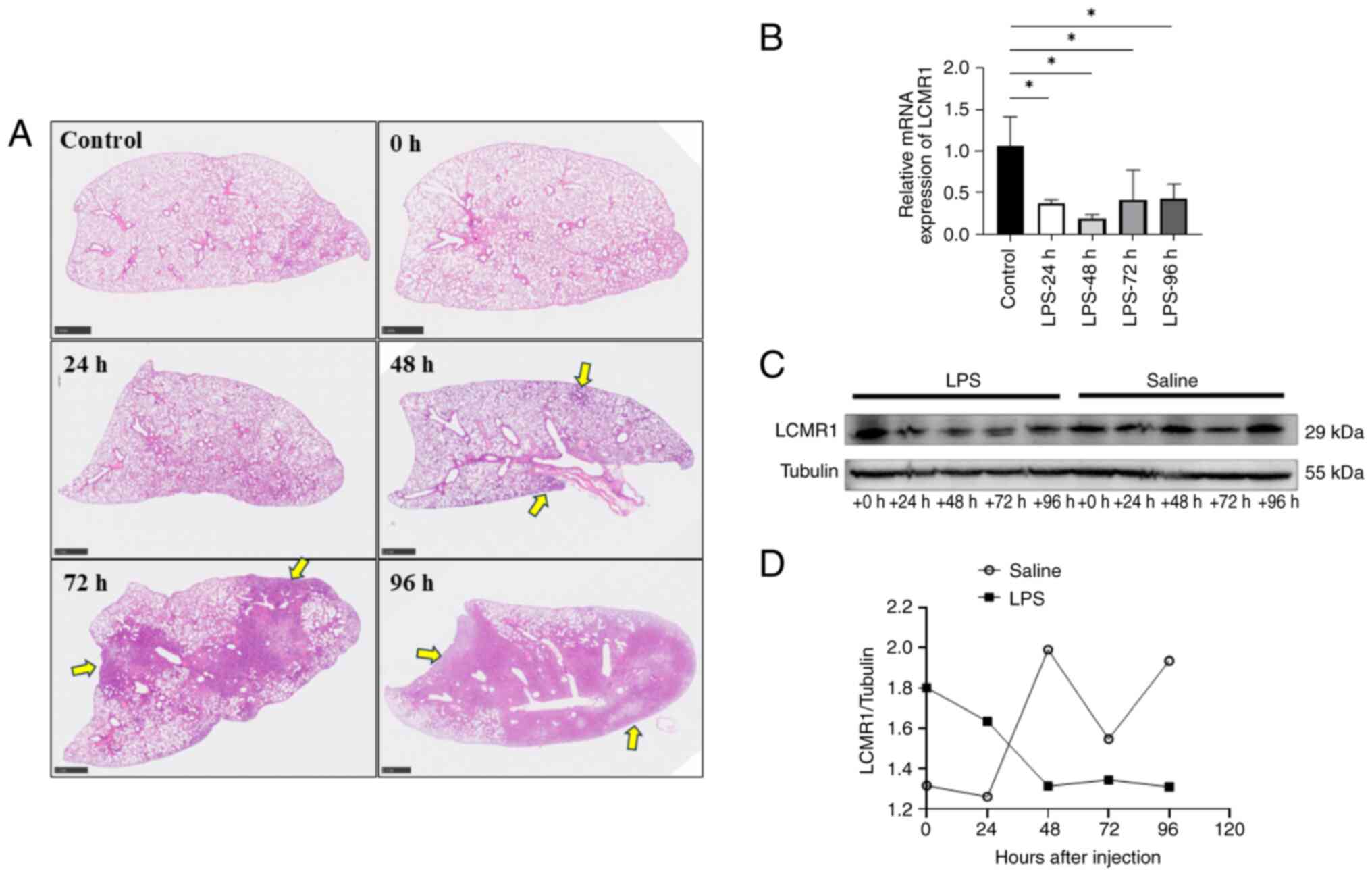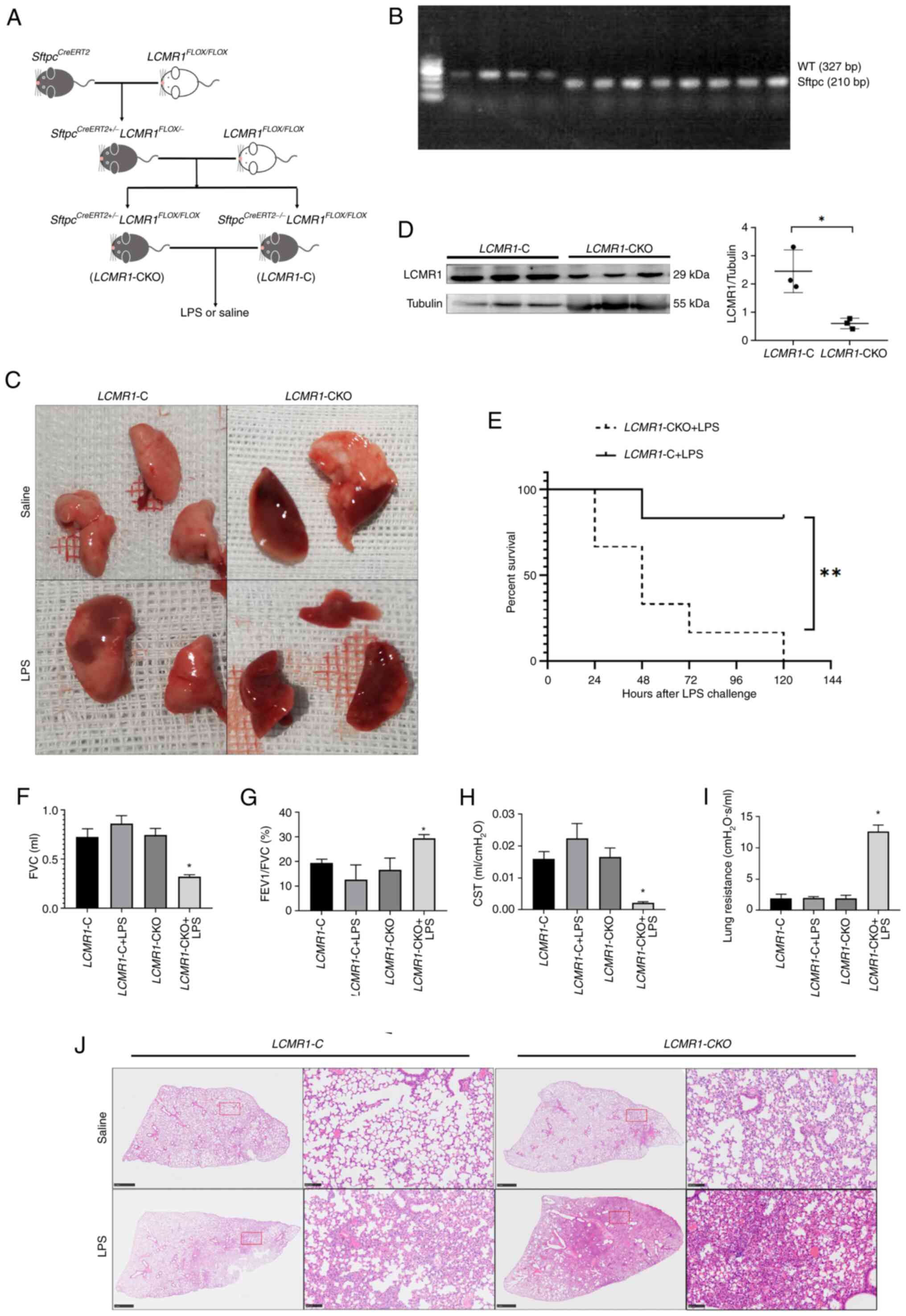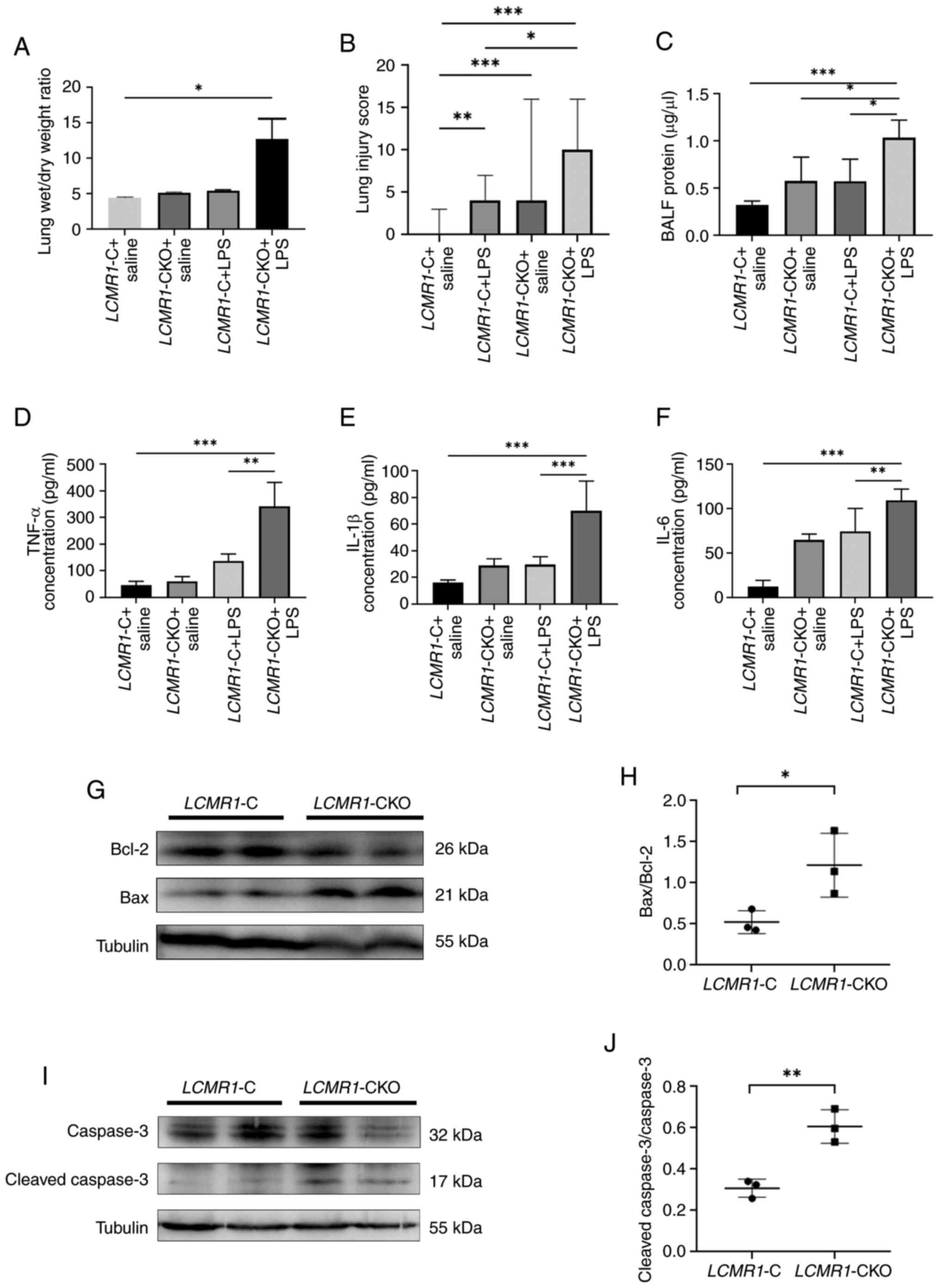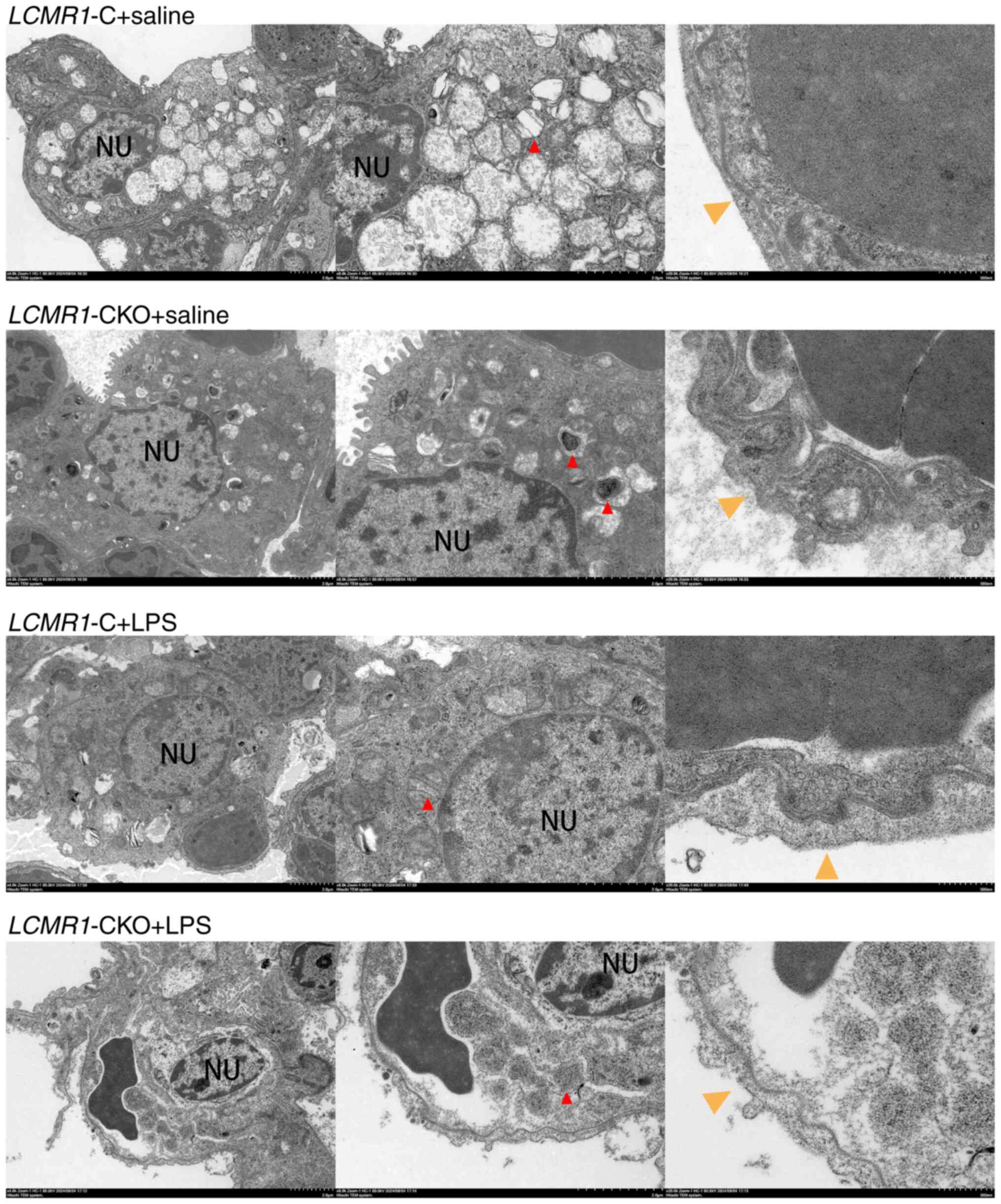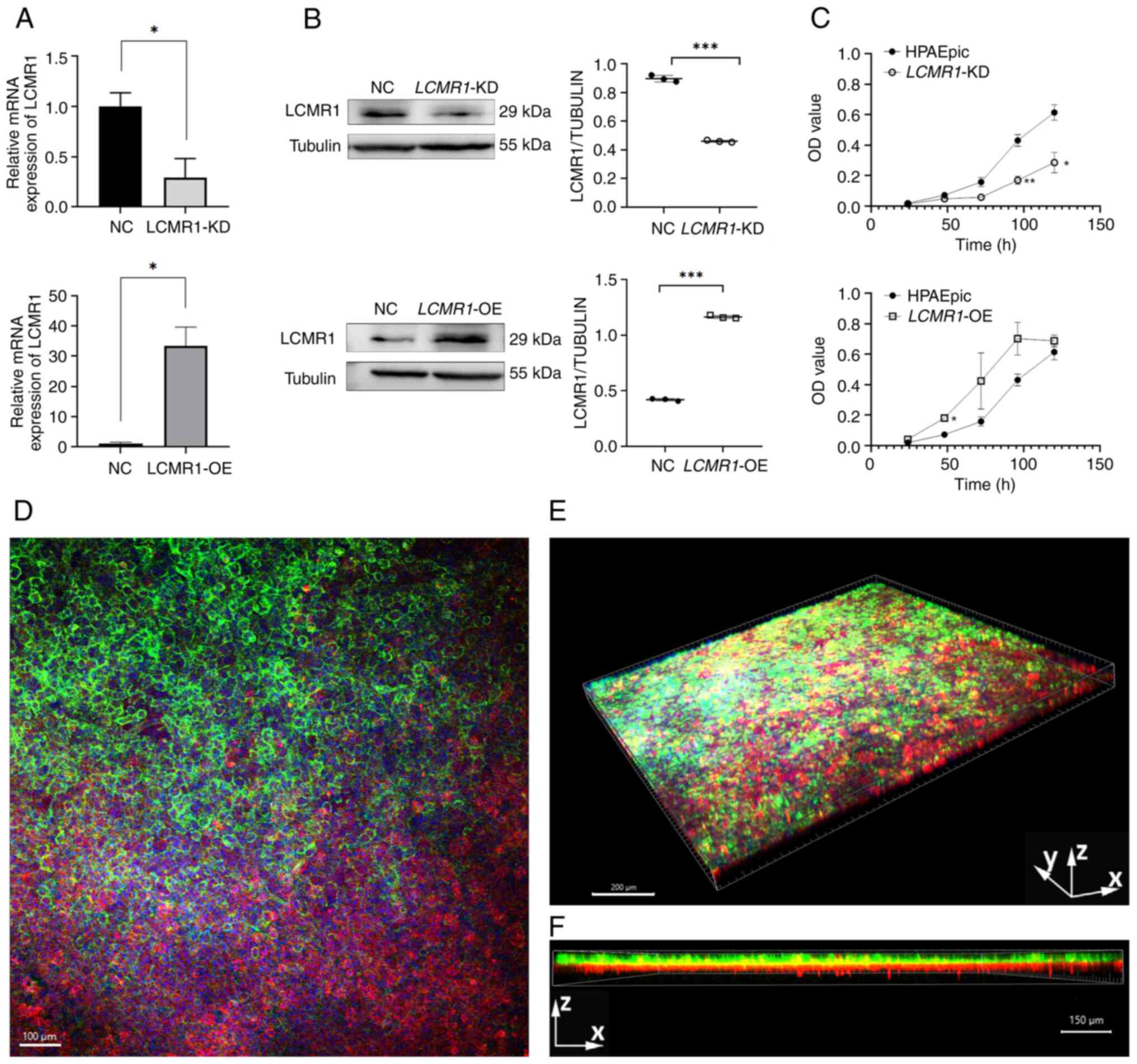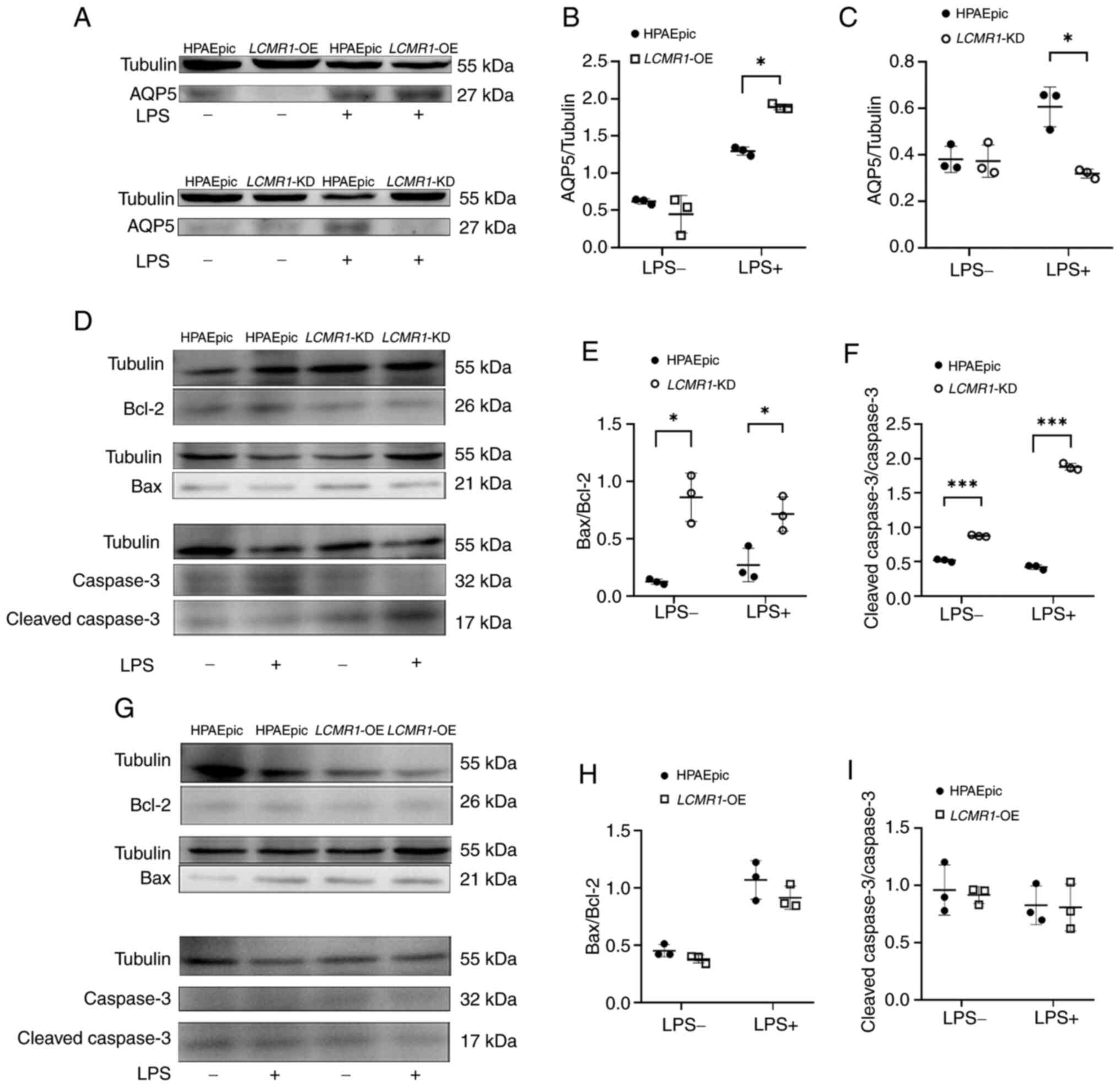|
1
|
Long ME, Mallampalli RK and Horowitz JC:
Pathogenesis of pneumonia and acute lung injury. Clin Sci (Lond).
136:747–769. 2022. View Article : Google Scholar : PubMed/NCBI
|
|
2
|
Wick KD, Ware LB and Matthay MA: Acute
respiratory distress syndrome. BMJ. 387:e0766122024. View Article : Google Scholar : PubMed/NCBI
|
|
3
|
Bellani G, Laffey JG, Pham T, Fan E,
Brochard L, Esteban A, Gattinoni L, van Haren F, Larsson A, McAuley
DF, et al: Epidemiology, patterns of care, and mortality for
patients with acute respiratory distress syndrome in intensive care
units in 50 countries. JAMA. 315:788–800. 2016. View Article : Google Scholar : PubMed/NCBI
|
|
4
|
Liu H, Yu X, Yu S and Kou J: Molecular
mechanisms in lipopolysaccharide-induced pulmonary endothelial
barrier dysfunction. Int Immunopharmacol. 29:937–946. 2015.
View Article : Google Scholar : PubMed/NCBI
|
|
5
|
Bos LDJ and Ware LB: Acute respiratory
distress syndrome: Causes, pathophysiology, and phenotypes. Lancet.
400:1145–1156. 2022. View Article : Google Scholar : PubMed/NCBI
|
|
6
|
Wang Y, Wang L, Ma S, Cheng L and Yu G:
Repair and regeneration of the alveolar epithelium in lung injury.
FASEB J. 38:e236122024. View Article : Google Scholar : PubMed/NCBI
|
|
7
|
Woods SJ, Waite AA, O'Dea KP, Halford P,
Takata M and Wilson MR: Kinetic profiling of in vivo lung cellular
inflammatory responses to mechanical ventilation. Am J Physiol Lung
Cell Mol Physiol. 308:L912–L921. 2015. View Article : Google Scholar : PubMed/NCBI
|
|
8
|
Li N, Liu B, Xiong R, Li G, Wang B and
Geng Q: HDAC3 deficiency protects against acute lung injury by
maintaining epithelial barrier integrity through preserving
mitochondrial quality control. Redox Biol. 63:1027462023.
View Article : Google Scholar : PubMed/NCBI
|
|
9
|
Chen H, Lin X, Yi X, Liu X, Yu R, Fan W,
Ling Y, Liu Y and Xie W: SIRT1-mediated p53 deacetylation inhibits
ferroptosis and alleviates heat stress-induced lung epithelial
cells injury. Int J Hyperthermia. 39:977–986. 2022. View Article : Google Scholar : PubMed/NCBI
|
|
10
|
Hiemstra PS, Tetley TD and Janes SM:
Airway and alveolar epithelial cells in culture. Eur Respir J.
54:19007422019. View Article : Google Scholar : PubMed/NCBI
|
|
11
|
Perelson AS and Ribeiro RM: Introduction
to modeling viral infections and immunity. Immunol Rev. 285:5–8.
2018. View Article : Google Scholar : PubMed/NCBI
|
|
12
|
Ma C, Peng Y, Li H and Chen W:
Organ-on-a-Chip: A new paradigm for drug development. Trends
Pharmacol Sci. 42:119–133. 2021. View Article : Google Scholar : PubMed/NCBI
|
|
13
|
Tan J, Guo Q, Tian L, Pei Z, Li D, Wu M,
Zhang J and Gao X: Biomimetic lung-on-a-chip to model virus
infection and drug evaluation. Eur J Pharm Sci. 180:1063292023.
View Article : Google Scholar : PubMed/NCBI
|
|
14
|
Bai H, Si L, Jiang A, Belgur C, Zhai Y,
Plebani R, Oh CY, Rodas M, Patil A, Nurani A, et al: Mechanical
control of innate immune responses against viral infection revealed
in a human lung alveolus chip. Nat Commun. 13:19282022. View Article : Google Scholar : PubMed/NCBI
|
|
15
|
Nawroth JC, Lucchesi C, Cheng D, Shukla A,
Ngyuen J, Shroff T, Varone A, Karalis K, Lee HH, Alves S, et al: A
microengineered airway lung chip models key features of
Viral-induced exacerbation of asthma. Am J Respir Cell Mol Biol.
63:591–600. 2020. View Article : Google Scholar : PubMed/NCBI
|
|
16
|
Wang P, Jin L, Zhang M, Wu Y, Duan Z, Guo
Y, Wang C, Guo Y, Chen W, Liao Z, et al: Blood-brain barrier injury
and neuroinflammation induced by SARS-CoV-2 in a lung-brain
microphysiological system. Nat Biomed Eng. 8:1053–1068. View Article : Google Scholar : PubMed/NCBI
|
|
17
|
Chen L, Liang Z, Tian Q, Li C, Ma X, Zhang
Y, Yang Z, Wang P and Li Y: Overexpression of LCMR1 is
significantly associated with clinical stage in human NSCLC. J Exp
Clin Cancer Res. 30:182011. View Article : Google Scholar : PubMed/NCBI
|
|
18
|
Wang Y, Li C, Wu Z, Dai Y, Liu L and Chen
L: Deletion of LCMR1 in alveolar type II cells induces lethal
impairment of lung structure and function in adult mice. J Thorac
Dis. 15:1445–1459. 2023. View Article : Google Scholar : PubMed/NCBI
|
|
19
|
Bao X, Zhao L, Guan H and Li F: Inhibition
of LCMR1 and ATG12 by demethylation-activated miR-570-3p is
involved in the anti-metastasis effects of metformin on human
osteosarcoma. Cell Death Dis. 9:6112018. View Article : Google Scholar : PubMed/NCBI
|
|
20
|
Wang K, Wang X, Fu X, Sun J, Zhao L, He H
and Fan Y: Lung cancer metastasis-related protein 1 promotes the
transferring from advanced metastatic prostate cancer to
castration-resistant prostate cancer by activating the
glucocorticoid receptor alpha signal pathway. Bioengineered.
13:5373–5385. 2022. View Article : Google Scholar : PubMed/NCBI
|
|
21
|
Liu L, Li C, Wu Z, Li Y, Yu H, Li T, Wang
Y, Zhao W and Chen L: LCMR1 promotes Large-cell lung cancer
proliferation and metastasis by downregulating HLA-Encoding genes.
Cancers (Basel). 15:54452023. View Article : Google Scholar : PubMed/NCBI
|
|
22
|
Percie du Sert N, Hurst V, Ahluwalia A,
Alam S, Avey MT, Baker M, Browne WJ, Clark A, Cuthill IC, Dirnagl
U, et al: The ARRIVE guidelines 2.0: Updated guidelines for
reporting animal research. PLoS Biol. 18:e30004102020. View Article : Google Scholar : PubMed/NCBI
|
|
23
|
Shrum B, Anantha RV, Xu SX, Donnelly M,
Haeryfar SM, McCormick JK and Mele T: A robust scoring system to
evaluate sepsis severity in an animal model. BMC Res Notes.
7:2332014. View Article : Google Scholar : PubMed/NCBI
|
|
24
|
Stanojevic S, Kaminsky DA, Miller MR,
Thompson B, Aliverti A, Barjaktarevic I, Cooper BG, Culver B, Derom
E, Hall GL, et al: ERS/ATS technical standard on interpretive
strategies for routine lung function tests. Eur Respir J.
60:21014992022. View Article : Google Scholar : PubMed/NCBI
|
|
25
|
Glaab T, Taube C, Braun A and Mitzner W:
Invasive and noninvasive methods for studying pulmonary function in
mice. Respir Res. 8:632007. View Article : Google Scholar : PubMed/NCBI
|
|
26
|
Fukumoto J, Fukumoto I, Parthasarathy PT,
Cox R, Huynh B, Ramanathan GK, Venugopal RB, Allen-Gipson DS,
Lockey RF and Kolliputi N: NLRP3 deletion protects from
hyperoxia-induced acute lung injury. Am J Physiol Cell Physiol.
305:C182–C189. 2013. View Article : Google Scholar : PubMed/NCBI
|
|
27
|
Zhang M, Wang P, Luo R, Wang Y, Li Z, Guo
Y, Yao Y, Li M, Tao T, Chen W, et al: Biomimetic human disease
model of SARS-CoV-2-Induced lung injury and immune responses on
organ chip system. Adv Sci (Weinh). 8:20029282021. View Article : Google Scholar : PubMed/NCBI
|
|
28
|
Livak KJ and Schmittgen TD: Analysis of
relative gene expression data using real-time quantitative PCR and
the 2(−Delta Delta C(T)) method. Methods. 25:402–408. 2001.
View Article : Google Scholar : PubMed/NCBI
|
|
29
|
Agaesse G, Barbollat-Boutrand L, Sulpice
E, Bhajun R, El Kharbili M, Berthier-Vergnes O, Degoul F, de la
Fouchardière A, Berger E, Voeltzel T, et al: A large-scale RNAi
screen identifies LCMR1 as a critical regulator of Tspan8-mediated
melanoma invasion. Oncogene. 36:50842017. View Article : Google Scholar : PubMed/NCBI
|
|
30
|
Wang L, Wang X, Tong L, Wang J, Dou M, Ji
S, Bi J, Chen C, Yang D, He H, et al: Recovery from acute lung
injury can be regulated via modulation of regulatory T cells and
Th17 cells. Scand J Immunol. 88:e127152018. View Article : Google Scholar : PubMed/NCBI
|
|
31
|
Dasgupta Q, Jiang A, Wen AM, Mannix RJ,
Man Y, Hall S, Javorsky E and Ingber DE: A human lung
alveolus-on-a-chip model of acute radiation-induced lung injury.
Nat Commun. 14:65062023. View Article : Google Scholar : PubMed/NCBI
|
|
32
|
Sehlmeyer K, Ruwisch J, Roldan N and
Lopez-Rodriguez E: Alveolar dynamics and Beyond-The importance of
surfactant protein C and cholesterol in lung homeostasis and
fibrosis. Front Physiol. 11:3862020. View Article : Google Scholar : PubMed/NCBI
|
|
33
|
Xiao K, He W, Guan W, Hou F, Yan P, Xu J,
Zhou T, Liu Y and Xie L: Mesenchymal stem cells reverse EMT process
through blocking the activation of NF-κB and Hedgehog pathways in
LPS-induced acute lung injury. Cell Death Dis. 11:8632020.
View Article : Google Scholar : PubMed/NCBI
|
|
34
|
Li J, Deng SH, Li J, Li L, Zhang F, Zou Y,
Wu DM and Xu Y: Obacunone alleviates ferroptosis during
lipopolysaccharide-induced acute lung injury by upregulating
Nrf2-dependent antioxidant responses. Cell Mol Biol Lett.
27:292022. View Article : Google Scholar : PubMed/NCBI
|
|
35
|
Zhang Y, Qin P, Tian L, Yan J and Zhou Y:
The role of mediator complex subunit 19 in human diseases. Exp Biol
Med (Maywood). 246:1681–1687. 2021. View Article : Google Scholar : PubMed/NCBI
|
|
36
|
Zhang X, Fan Y, Liu B, Qi X, Guo Z and Li
L: Med19 promotes breast cancer cell proliferation by regulating
CBFA2T3/HEB expression. Breast Cancer. 24:433–441. 2017. View Article : Google Scholar : PubMed/NCBI
|
|
37
|
Zhang X, Gao D, Fang K, Guo Z and Li L:
Med19 is targeted by miR-101-3p/miR-422a and promotes breast cancer
progression by regulating the EGFR/MEK/ERK signaling pathway.
Cancer Lett. 444:105–115. 2019. View Article : Google Scholar : PubMed/NCBI
|
|
38
|
Ruoff R, Weber H, Wang Y, Huang H, Shapiro
E, Fenyo D and Garabedian MJ: MED19 encodes two unique protein
isoforms that confer prostate cancer growth under low androgen
through distinct gene expression programs. Sci Rep. 13:182272023.
View Article : Google Scholar : PubMed/NCBI
|
|
39
|
Liu K, Meng X, Liu Z, Tang M, Lv Z, Huang
X, Jin H, Han X, Liu X, Pu W, et al: Tracing the origin of alveolar
stem cells in lung repair and regeneration. Cell.
187:2428–2445.e20. 2024. View Article : Google Scholar : PubMed/NCBI
|
|
40
|
Kaiser AM, Gatto A, Hanson KJ, Zhao RL,
Raj N, Ozawa MG, Seoane JA, Bieging-Rolett KT, Wang M, Li I, et al:
p53 governs an AT1 differentiation programme in lung cancer
suppression. Nature. 619:851–859. 2023. View Article : Google Scholar : PubMed/NCBI
|
|
41
|
Xu Y, Liang Z, Li C, Yang Z and Chen L:
LCMR1 interacts with DEK to suppress apoptosis in lung cancer
cells. Mol Med Rep. 16:4159–4164. 2017. View Article : Google Scholar : PubMed/NCBI
|
|
42
|
Zhang Y, Li P, Hu J, Zhao LN, Li JP, Ma R,
Li WW, Shi M and Wei LC: Role and mechanism of miR-4778-3p and its
targets NR2C2 and Med19 in cervical cancer radioresistance. Biochem
Biophys Res Commun. 508:210–216. 2019. View Article : Google Scholar : PubMed/NCBI
|















